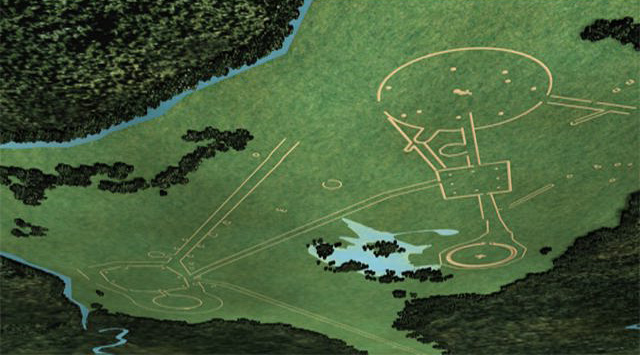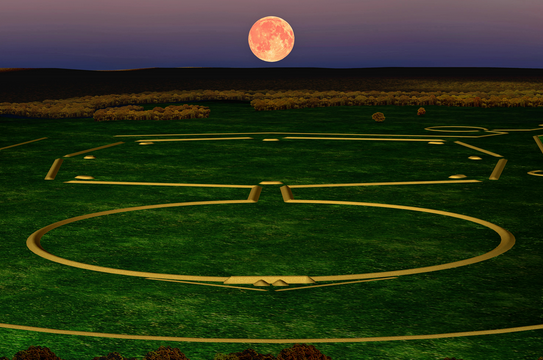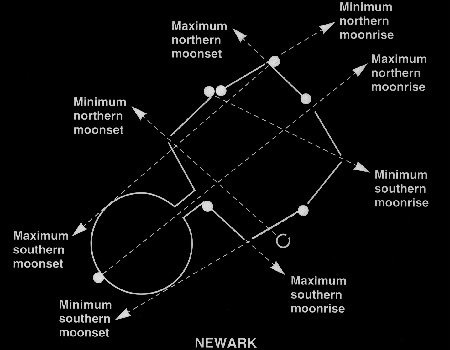It looks like you're using an Ad Blocker.
Please white-list or disable AboveTopSecret.com in your ad-blocking tool.
Thank you.
Some features of ATS will be disabled while you continue to use an ad-blocker.
17
share:
There was an article today here with regards to
the Newark mounds were the octagon is considered to have been marking Northernmost and Southermost lunar standstill points;
I'm not sure that what is suggested is entirely news but anyway it does give insight into what the site represented in my opinion, which is a schematic of the constellations from Aries through to Aquarius, a charting of the Heavens.
So in recent threads i have looked at the commencement of the lunar cycle in Aries, by my estimation the octagon represents the very head of that sheep Aries, Moon schematic central, or whatever particular way the Hopewell culture considered that constellation, even without knowing their mythology one can evaluate expectations with regards to that quadrant of the skies to a certain extent.
The general considerations are that were the lunar calendar begins and ends at Aries-Pisces a new lunar cycle, or year, or age, is likely to transpire, perhaps in the sense of the fertilization of an egg, but for this to be truly born it has to travel down the tube to the square of Pegasus, in Indo-European mythology, the place of first establishment.
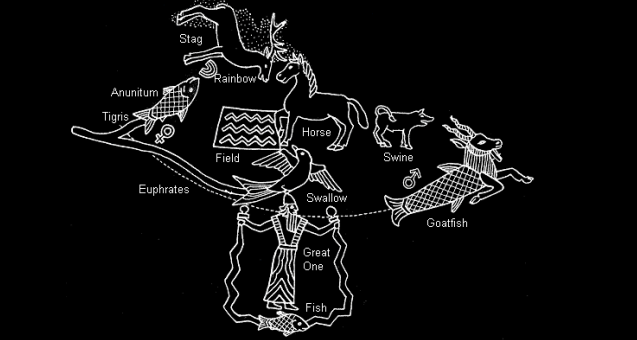
However this was interpreted by Hopewell culture one way or another that egg would have been passing down that tube as the age of Pisces progressed, so the small circle seen within the two extensions of Pisces could indicate were the Sun was rising during the vernal equinox at the time of construction, its progress could have been plotted along the entire length.

Interpretations of the layout of the mounds with regards to what's there and what isn't there seem to differ slightly, perhaps there were later additions and such forth, but in the groundplan version from the site there does seem to be the suggestion that what is seen above the square of Pegasus is a horse, which is as the Indo-Europeans would have it of course.
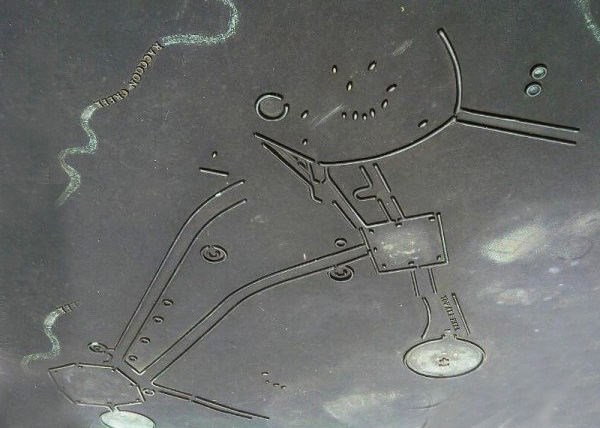
That would pretty much put them in line with everyone else's speculation, but anyway it's a great monument and provides people with an opportunity to walk the great drama of the ages, maybe even act it out...
The Newark Earthworks are the largest known complex of geometric earthworks on the planet, according to archaeologists. Radiocarbon dating puts construction at around A.D. 1 to A.D. 400
They cover about 4.5 square miles, and about 7 million cubic feet of earth was used to construct them.
I'm not sure that what is suggested is entirely news but anyway it does give insight into what the site represented in my opinion, which is a schematic of the constellations from Aries through to Aquarius, a charting of the Heavens.
One piece of the Earthworks is a giant octagon, large enough to fit four Roman Colosseums. Each of the octagon’s points lines up perfectly with specific times in the lunar cycle, pointing to the northernmost and southernmost places where the moon rises and sets.
The moon goes through an elaborate cycle, sort of like the sun, in that there’s a solstice and an equinox — it’s the rhythm of the year
The lunar cycle lasts 18.6 years. At the beginning, middle and end of that cycle, the arc is either at its widest or narrowest, depending on the part of the cycle we are in.
That means that once every 9.3 years, the moon’s arc is either at its widest or narrowest.
That the Newark Earthworks’ octagon lines up with those widest and narrowest moonrises and moonsets suggests that their builders, the Hopewell, understood the cycle.
So in recent threads i have looked at the commencement of the lunar cycle in Aries, by my estimation the octagon represents the very head of that sheep Aries, Moon schematic central, or whatever particular way the Hopewell culture considered that constellation, even without knowing their mythology one can evaluate expectations with regards to that quadrant of the skies to a certain extent.
The general considerations are that were the lunar calendar begins and ends at Aries-Pisces a new lunar cycle, or year, or age, is likely to transpire, perhaps in the sense of the fertilization of an egg, but for this to be truly born it has to travel down the tube to the square of Pegasus, in Indo-European mythology, the place of first establishment.

However this was interpreted by Hopewell culture one way or another that egg would have been passing down that tube as the age of Pisces progressed, so the small circle seen within the two extensions of Pisces could indicate were the Sun was rising during the vernal equinox at the time of construction, its progress could have been plotted along the entire length.

Interpretations of the layout of the mounds with regards to what's there and what isn't there seem to differ slightly, perhaps there were later additions and such forth, but in the groundplan version from the site there does seem to be the suggestion that what is seen above the square of Pegasus is a horse, which is as the Indo-Europeans would have it of course.

That would pretty much put them in line with everyone else's speculation, but anyway it's a great monument and provides people with an opportunity to walk the great drama of the ages, maybe even act it out...
As above so below.
Ancient shamans and holy men believed that if you encapsulate the heavenly movements in an earthly representative structure you can connect it with the power of the heavens..
Ancient shamans and holy men believed that if you encapsulate the heavenly movements in an earthly representative structure you can connect it with the power of the heavens..
a reply to: Kantzveldt
Nice Kantzveldt,
Good to see you delving into a native American subject.
Newark is more than just a moon calendar, it represents the advanced geodetic knowledge of many native American cultures.
Here's a little about the Newark complex
Newark Mounds
North American Earthworks
and more excellent work on Archeo-astronomy by Mr. Jacobs
Archeo astronomy
Nice Kantzveldt,
Good to see you delving into a native American subject.
Newark is more than just a moon calendar, it represents the advanced geodetic knowledge of many native American cultures.
Here's a little about the Newark complex
Newark Mounds
Excerpts from my 2001 paper Possible Geodetic Properties and Relationships of
Some Monumental Earthworks in the Middle Ohio Valley, A Preliminary Inquiry.
The relationships between Newark Earthworks and Marietta Square and the orientations and relationships of the various monuments of Newark Earthworks offer the best evidence of knowledge and practice of geodesy. The Newark Octagon and Marietta Square ratio of arc distance to longitude difference, the azimuth of the Newark Octagon, and the bearings between Newark Circle and the Octagon Circle infer precise understanding of the mathematical ratio of latitude to longitude. The precise commensuration of the Newark to Marietta arc distance and their longitude difference with the SO module (earth’s angular orbital motion per day) infers a precise understanding of astronomic constants and the scale of the earth. The redundancy of expression of the same relationships makes it very difficult to discount the relationships as coincidental. ... The fact that the largest of the monuments express these geodetic relationships also argues against coincidence. Given the distances involved, creating the relationships between the Middle Ohio monuments could have been accomplished using direct surveying and mathematics, and thus does not necessarily infer an astronomical method of the determination of longitude. If the Newark to Fort Center relationships are intentional, use of an astronomical method for determination of longitude is also inferred.
I conclude that the builders of the Middle Ohio earthworks understood aspects of geodesy, including accurate astronomical knowledge, knowledge of the scale and shape of the earth, knowledge of their location on the earth, and how to place find and point position.
The alignment of the Octagon earthwork nearly corresponds to the northerly lunar major extrema rise/set azimuth. According to Thomas (1894), the Octagon's azimuth is 52.15° E. of N. Further discussion of possible reasons for the orientation of the Octagon is found in the Temporal Epoch Calculations page.
Newark Octagon to Marietta Capitolium Mound, arc distance = CIR / 365.0
Newark Octagon to Marietta Capitolium Mound, longitude difference = CIR / 365.0
Newark Octagon to Marietta Quadranau Mound, arc distance = CIR / 366.0
Lunar orbits per rotation = 0.036501
Lunar orbits per day = 0.036601
Newark Observatory Mound to Newark Octagon Center = 0.000100 radians
Newark Observatory Circle to Fort Center Circle = 0.0365016 CIR
The great circles at Newark align to Marietta Earthworks.
North American Earthworks
and more excellent work on Archeo-astronomy by Mr. Jacobs
Archeo astronomy
a reply to: punkinworks10
Thanks those are very good links, i think certainly they were capable of accurate astronomical observation and orientation. I wonder if what is seen at the High Bank site is comparable to what is at Newark, an avenue effectively associate with the lower extension of Pisces that translates from Aries to the Pegasus square, and upon which you could effectively represent the progression of the sun through that constellation over time at the Vernal equinox, the circle along the extension showing the then point of sunrise.
Liberty Township
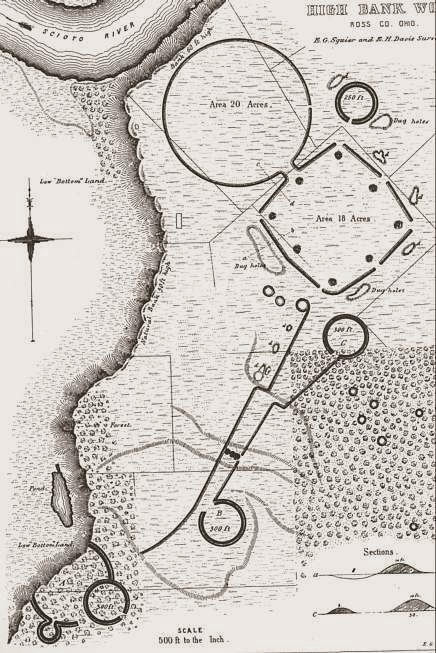
Thanks those are very good links, i think certainly they were capable of accurate astronomical observation and orientation. I wonder if what is seen at the High Bank site is comparable to what is at Newark, an avenue effectively associate with the lower extension of Pisces that translates from Aries to the Pegasus square, and upon which you could effectively represent the progression of the sun through that constellation over time at the Vernal equinox, the circle along the extension showing the then point of sunrise.
Liberty Township

new topics
-
2024 Pigeon Forge Rod Run - On the Strip (Video made for you)
Automotive Discussion: 1 minutes ago -
Gaza Terrorists Attack US Humanitarian Pier During Construction
Middle East Issues: 27 minutes ago -
The functionality of boldening and italics is clunky and no post char limit warning?
ATS Freshman's Forum: 1 hours ago -
Meadows, Giuliani Among 11 Indicted in Arizona in Latest 2020 Election Subversion Case
Mainstream News: 2 hours ago -
Massachusetts Drag Queen Leads Young Kids in Free Palestine Chant
Social Issues and Civil Unrest: 2 hours ago -
Weinstein's conviction overturned
Mainstream News: 3 hours ago -
Supreme Court Oral Arguments 4.25.2024 - Are PRESIDENTS IMMUNE From Later Being Prosecuted.
Above Politics: 5 hours ago -
Krystalnacht on today's most elite Universities?
Social Issues and Civil Unrest: 5 hours ago -
Chris Christie Wishes Death Upon Trump and Ramaswamy
Politicians & People: 5 hours ago -
University of Texas Instantly Shuts Down Anti Israel Protests
Education and Media: 7 hours ago
top topics
-
Krystalnacht on today's most elite Universities?
Social Issues and Civil Unrest: 5 hours ago, 8 flags -
Weinstein's conviction overturned
Mainstream News: 3 hours ago, 6 flags -
Electrical tricks for saving money
Education and Media: 17 hours ago, 5 flags -
Supreme Court Oral Arguments 4.25.2024 - Are PRESIDENTS IMMUNE From Later Being Prosecuted.
Above Politics: 5 hours ago, 5 flags -
University of Texas Instantly Shuts Down Anti Israel Protests
Education and Media: 7 hours ago, 5 flags -
Meadows, Giuliani Among 11 Indicted in Arizona in Latest 2020 Election Subversion Case
Mainstream News: 2 hours ago, 4 flags -
Massachusetts Drag Queen Leads Young Kids in Free Palestine Chant
Social Issues and Civil Unrest: 2 hours ago, 3 flags -
Chris Christie Wishes Death Upon Trump and Ramaswamy
Politicians & People: 5 hours ago, 2 flags -
Any one suspicious of fever promotions events, major investor Goldman Sachs card only.
The Gray Area: 10 hours ago, 2 flags -
God's Righteousness is Greater than Our Wrath
Religion, Faith, And Theology: 14 hours ago, 1 flags
17

